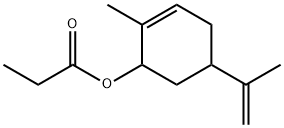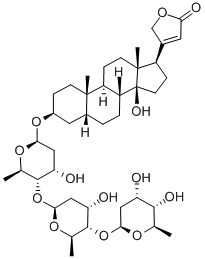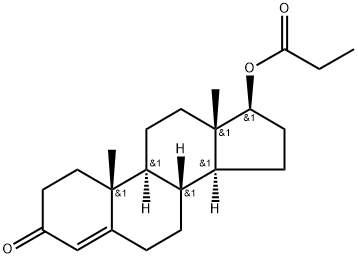n-Propyl ether
Synonym(s):Propyl ether
- CAS NO.:111-43-3
- Empirical Formula: C6H14O
- Molecular Weight: 102.17
- MDL number: MFCD00009376
- EINECS: 203-869-6
- SAFETY DATA SHEET (SDS)
- Update Date: 2023-11-28 16:31:43

What is n-Propyl ether?
Chemical properties
CLEAR COLOURLESS LIQUID
The Uses of n-Propyl ether
Di-n-propyl ether, is used as a solvent and intermediate for organic chemical synthesis.
General Description
A colorless liquid with a strong odor. Less dense than water and slightly soluble in water. Flash point of 70°F. Vapors are heavier than air. In high concentrations the vapors may be narcotic.
Air & Water Reactions
Highly flammable. Ethers tend to form unstable peroxides when exposed to oxygen. Ethyl, isobutyl, ethyl tert-butyl, and ethyl tert-pentyl ether are particularly hazardous in this respect. Ether peroxides can sometimes be observed as clear crystals deposited on containers or along the surface of the liquid. Slightly soluble in water.
Reactivity Profile
Ethers, such as DIPROPYL ETHER, can act as bases. They form salts with strong acids and addition complexes with Lewis acids. The complex between diethyl ether and boron trifluoride is an example. Ethers may react violently with strong oxidizing agents. In other reactions, which typically involve the breaking of the carbon-oxygen bond, ethers are relatively inert.
Health Hazard
Inhalation or contact with material may irritate or burn skin and eyes. Fire may produce irritating, corrosive and/or toxic gases. Vapors may cause dizziness or suffocation. Runoff from fire control may cause pollution.
Fire Hazard
HIGHLY FLAMMABLE: Will be easily ignited by heat, sparks or flames. Vapors may form explosive mixtures with air. Vapors may travel to source of ignition and flash back. Most vapors are heavier than air. They will spread along ground and collect in low or confined areas (sewers, basements, tanks). Vapor explosion hazard indoors, outdoors or in sewers. Runoff to sewer may create fire or explosion hazard. Containers may explode when heated. Many liquids are lighter than water.
Safety Profile
Poison by intravenous route. Moderately toxic by inhalation. Possibly narcotic. A flammable liquid and dangerous fire hazard when exposed to heat, flame, or oxidizers. Forms explosive peroxides. Dangerous upon exposure to heat or flame; can react vigorously with oxidizing materials. When heated to decomposition it emits acrid smoke and irritating fumes. See also ETHERS.
Purification Methods
Purify the ether by drying with CaSO4, by passage through an alumina column (to remove peroxides), and by fractional distillation. [Beilstein 1 III 2146, 1 IV 1422.]
Properties of n-Propyl ether
| Melting point: | -123 °C |
| Boiling point: | 88-90 °C(lit.) |
| Density | 0.736 g/mL at 25 °C(lit.) |
| vapor pressure | 55 mm Hg ( 20 °C) |
| refractive index | n |
| Flash point: | 40 °F |
| storage temp. | Flammables area |
| solubility | H2O: slightly soluble |
| form | Liquid |
| color | Clear colorless |
| Water Solubility | It is slightly soluble in water 3 g/L (20°C), soluble in alcohol and ether. |
| Merck | 14,7857 |
| BRN | 1731312 |
| Dielectric constant | 3.4(26℃) |
| CAS DataBase Reference | 111-43-3(CAS DataBase Reference) |
| EPA Substance Registry System | Propyl ether (111-43-3) |
Safety information for n-Propyl ether
| Signal word | Danger |
| Pictogram(s) |
 Flame Flammables GHS02  Exclamation Mark Irritant GHS07 |
| GHS Hazard Statements |
H225:Flammable liquids H336:Specific target organ toxicity,single exposure; Narcotic effects |
| Precautionary Statement Codes |
P210:Keep away from heat/sparks/open flames/hot surfaces. — No smoking. |
Computed Descriptors for n-Propyl ether
New Products
4-AMINO-TETRAHYDRO-PYRAN-4-CARBOXYLIC ACID HCL 4-Aminotetrahydropyran-4-carbonitrile Hydrochloride (R)-3-Aminobutanenitrile Hydrochloride 3-((Dimethylamino)methyl)-5-methylhexan-2-one oxalate 1,4-Dioxa-8-azaspiro[4.5]decane 5-Bromo-2-nitropyridine 4-(Dimethylamino)tetrahydro-2H-pyran-4-carbonitrile Diclofenac Potassium Ornidazole IP Diclofenac Sodium IP/BP/EP/USP Mefenamic Acid IP/BP/EP/USP Aceclofenac IP/BP/EP Nimesulide BP SODIUM AAS SOLUTION ZINC AAS SOLUTION BUFFER SOLUTION PH 10.0(BORATE) GOOCH CRUCIBLE SINTERED AQUANIL 5 BERYLLIUM AAS SOLUTION Methylcobalamin (vitamin B12) SODIUM METHYL PARABEN SODIUM VALPROATE Racecadotril XANTHAN GUMRelated products of tetrahydrofuran








You may like
-
 Propyl Ether CAS 111-43-3View Details
Propyl Ether CAS 111-43-3View Details
111-43-3 -
 Dipropyl ether CAS 111-43-3View Details
Dipropyl ether CAS 111-43-3View Details
111-43-3 -
 89796-99-6 Aceclofenac IP/BP/EP 98%View Details
89796-99-6 Aceclofenac IP/BP/EP 98%View Details
89796-99-6 -
 61-68-7 98%View Details
61-68-7 98%View Details
61-68-7 -
 Diclofenac Sodium IP/BP/EP/USP 98%View Details
Diclofenac Sodium IP/BP/EP/USP 98%View Details
15307-79-6 -
 Ornidazole IP 16773-42-5 98%View Details
Ornidazole IP 16773-42-5 98%View Details
16773-42-5 -
 51803-78-2 Nimesulide BP 98%View Details
51803-78-2 Nimesulide BP 98%View Details
51803-78-2 -
 15307-81-0 98%View Details
15307-81-0 98%View Details
15307-81-0